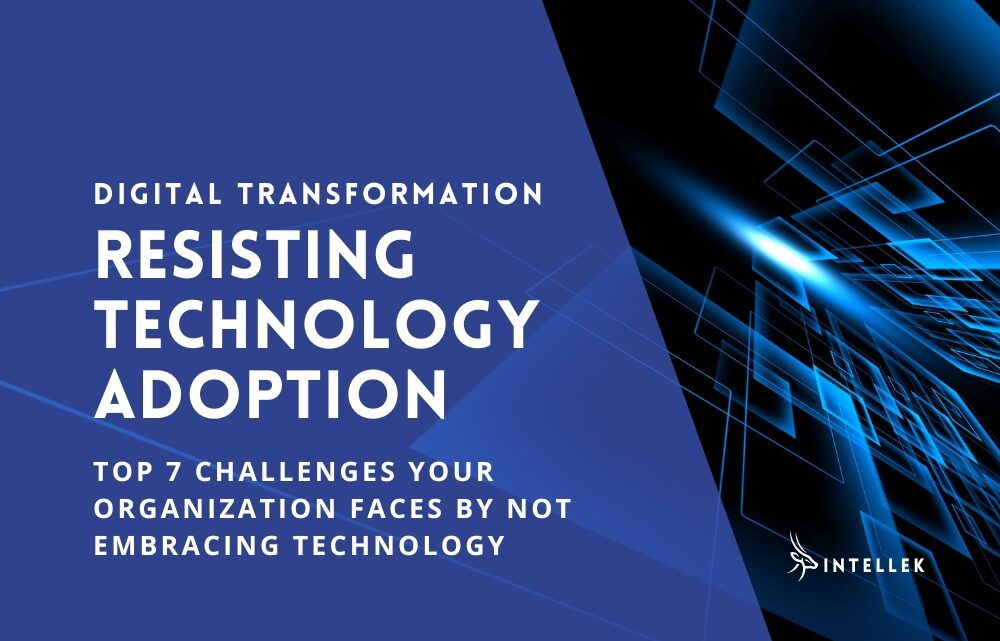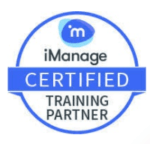
Organizations that fail to adapt to technological advancements risk falling behind their competitors. Digital transformation is no longer an option but a necessity for businesses across all industries to thrive. However, embracing this shift can be daunting, with many companies encountering significant challenges along the way. In this article, we’ll explore the real cost of resisting this transformation and the most common pitfalls organizations face by not keeping up with tech advancement.
IN THIS ARTICLE...
What is Digital Transformation?
Digital transformation is the process of leveraging digital technologies to radically improve organizational performance, create new business models, enhance customer experiences, and drive innovation.
What is the Purpose of Digital Transformation?
The main purpose of digital transformation is to enable organizations to adapt to rapidly changing market conditions, customer expectations, and technological advancements, ensuring their competitiveness, efficiency, and long-term sustainability.
How does digital transformation work?
Digital transformation works by integrating digital technologies across all aspects of an organization, including operations, processes, products/services, and customer interactions.
It involves:
- Adopting technologies like cloud computing, artificial intelligence, automation, and data analytics.
- Optimizing and digitizing core business processes.
- Developing new digital products, services, and business models.
- Enhancing customer experiences through personalization and omnichannel engagement.
- Fostering a data-driven, agile, and innovative culture.
By holistically embracing digital technologies and transforming their operations, organizations can drive operational efficiencies, improve decision-making, and unlock new revenue streams while staying ahead of competitors.
Real Cost of Resisting Transformation
As the business landscape continues to evolve at a rapid pace, driven by technical evolution and shifting consumer expectations, companies that cling to traditional methods and resist adapting to new realities risk being left behind. A resistance to adapt can lead to an erosion of market share, as more agile competitors leverage digital technologies to optimize operations, enhance customer experiences, and drive innovation.
According to research from Prophet, market pressures are the leading drivers of digital transformation as most efforts are spurred by growth opportunities (51%) and increased competitive pressure (41%). Moreover, complacency can hinder an organization’s ability to attract and retain top talent, as tech-savvy professionals gravitate towards companies that prioritize staying ahead of the digital curve.
The High Price of Complacency
Complacency is often the first hurdle that organizations must overcome when it comes to digital transformation. Many companies, particularly those that have been successful in the past, become resistant to change and cling to traditional methods of operation. However, this unwillingness to adapt can have severe consequences in the long run.
What role does company culture play in successful transformation?
Company culture plays a crucial role in the success of digital transformation initiatives. A culture that embraces change, innovation, and continuous learning is essential for transformation to take root. Organizations should foster a growth mindset, encourage cross-functional collaboration, and empower employees to experiment and take calculated risks. Additionally, strong leadership commitment and clear communication of the transformation vision are vital to gaining buy-in and driving cultural change across the organization.
Challenges of Not Embracing Technology
While the importance of adapting to technology is widely recognized, many organizations still grapple with the decision to fully commit to this critical journey. The reluctance to embrace these advancements can stem from various factors, including complacency, fear of change, or a lack of understanding of the potential consequences.
However, the costs of resisting the transformation are significant and far-reaching. From losing competitive edge to perpetuating inefficiencies, diminishing customer experiences, and missing out on opportunities for innovation, the challenges faced by organizations that fail to adapt are multifaceted.
In the following sections, we will explore seven major pitfalls that highlight the real cost of not embracing technology and transformation within an organization.
1. Losing the Competitive Edge
One of the primary costs of resisting digital transformation is the loss of competitive advantage. As competitors leverage new technologies to streamline processes, enhance customer experiences, and drive innovation, companies that lag behind risk becoming obsolete. This can result in a significant loss of market share, diminished customer loyalty, and ultimately, a decline in revenue.
2. Inefficient Operations and Rising Costs
Another challenge that organizations face is the perpetuation of inefficient operations and rising costs. Manual processes, outdated systems, and legacy infrastructure can hinder productivity, increase operational expenses, and limit scalability. In contrast, businesses that adopt digital technologies can automate repetitive tasks, optimize workflows, and reduce overhead costs, ultimately improving their bottom line.
3. Failure to Attract and Retain Top Talent
In the digital age, attracting and retaining top talent is crucial for organizational success. However, companies may struggle to appeal to tech-savvy candidates who seek opportunities to work with cutting-edge technologies and innovative practices. This can lead to a brain drain, as talented individuals opt for more progressive organizations that prioritize digital advancements.
4. Diminished Customer Experiences
In an era where customers expect seamless, personalized experiences, organizations that fail to leverage digital technologies risk falling behind in meeting these expectations. From outdated online platforms to inefficient customer service channels, a lack of digital transformation can result in poor customer experiences, leading to decreased satisfaction, loyalty, and revenue loss.
5. Cybersecurity Vulnerabilities
As cyber threats continue to evolve, organizations that rely on legacy systems and outdated security measures face heightened risks of data breaches, ransomware attacks, and other cybersecurity incidents. Embracing digital transformation often involves implementing robust security protocols, utilizing cloud-based solutions, and adopting advanced cybersecurity measures, which can help mitigate these risks and protect valuable data assets.
6. Missed Opportunities for Innovation
Adapting to new technology not only enables organizations to streamline existing processes but also opens doors to new opportunities for innovation. Companies that resist technological advancements may miss out on the potential to develop new products, services, or business models that could give them a competitive edge in their respective markets.
7. Lack of Agility and Adaptability
In today’s rapidly changing business landscape, agility and adaptability are essential for organizations to thrive. Digital transformation equips companies with the tools and mindset necessary to quickly respond to market shifts, customer demands, and disruptive forces. By resisting this transformation, organizations may find themselves unable to pivot and adapt, ultimately hindering their long-term success.
Overcoming the Barriers to Digital Transformation
While the benefits of digital transformation are compelling, many organizations may still hesitate due to perceived risks, costs, and challenges associated with this journey. Here are some common concerns and perspectives on how to mitigate them:
Concern: High upfront costs and return on investment Digital transformation initiatives can require significant investments in new technologies, infrastructure, and talent acquisition. Organizations may be hesitant to commit substantial resources without a clear understanding of the potential return on investment (ROI).
Mitigation: Conduct a thorough cost-benefit analysis, prioritize initiatives with the highest potential impact, and adopt a phased approach. Many digital solutions, such as cloud computing and automation, can quickly drive cost savings and operational efficiencies, offsetting upfront expenses. Additionally, focus on the long-term competitive advantages and revenue opportunities enabled by digital transformation.
Concern: Disruption to existing processes and operations Implementing new digital systems and processes can be disruptive to ongoing operations, potentially leading to temporary productivity dips, employee resistance, and customer dissatisfaction.
Mitigation: Develop a comprehensive change management plan that involves all stakeholders, provides adequate training and support, and emphasizes effective communication. Prioritize initiatives that can integrate with existing systems and processes, minimizing disruptions. Pilot projects can also help identify and address potential issues before broader rollouts.
Concern: Cybersecurity and data privacy risks As organizations adopt more digital technologies and generate vast amounts of data, they may face heightened cybersecurity risks and data privacy concerns, especially in light of increasing regulatory scrutiny.
Mitigation: Implement robust cybersecurity measures, including advanced firewalls, encryption, access controls, and employee training. Regularly assess and update security protocols to address evolving threats. Establish clear data governance policies and processes to ensure compliance with privacy regulations.
Concern: Legacy system compatibility and technical debt Many organizations have invested heavily in legacy systems and infrastructure, making it challenging to integrate new digital technologies or migrate to modern platforms.
Mitigation: Consider hybrid approaches that allow for gradual migration, leveraging cloud-based solutions and APIs to bridge the gap between legacy and new systems. Prioritize technical debt reduction and modernization initiatives to phase out obsolete technologies over time.
By proactively addressing these concerns and implementing appropriate mitigation strategies, organizations can navigate their journey more effectively, minimizing risks and maximizing the potential benefits.
The Path Forward: Embracing Digital Transformation
While the challenges of digital transformation are undeniable, the potential rewards far outweigh the risks. Organizations that proactively embrace technological advancements can gain a competitive edge, enhance operational efficiency, attract top talent, deliver exceptional customer experiences, and foster a culture of innovation.
How to Approach Your Transformation
The first step in this journey is to cultivate a digital-first mindset throughout the organization, from leadership to frontline employees. This mindset shift involves recognizing the importance of digital transformation and fostering a culture that embraces change and continuous learning.
Next, organizations should assess their current digital maturity and identify areas for improvement. This process may involve conducting a comprehensive audit of existing systems, processes, and technologies, as well as seeking input from employees and customers.
Armed with this knowledge, organizations can develop a comprehensive strategy that aligns with their business goals and addresses their unique challenges. This strategy should encompass various aspects, such as technology adoption, process optimization, data management, cybersecurity, and employee upskilling.
Effective communication and change management are also crucial components of a successful digital journey. Organizations should actively involve employees, provide training and support, and foster a culture of continuous learning and adaptation.
How do you measure the success digital transformation?
Measuring the success of a digital transformation initiative requires defining clear metrics aligned with your organizational goals. Key performance indicators (KPIs) can include operational efficiency gains, cost savings, customer satisfaction scores, employee productivity, revenue growth from new digital products/services, and adoption rates of new technologies. Regular data collection and analysis are crucial to track progress, identify areas for improvement, and demonstrate the return on investment.
How long does a typical transformation journey take?
There is no one-size-fits-all timeline for digital transformation, as the duration depends on various factors, such as the organization’s size, industry, existing digital maturity, and the scope of the transformation. However, it’s important to approach a transformation as an ongoing process rather than a one-time project. Some initiatives may yield results within months, while more complex transformations can take years. Adopting an agile, iterative approach and prioritizing quick wins can help maintain momentum and demonstrate early successes.
Next Steps: Kickstarting Your Journey
- Assess Your Digital Maturity
- Conduct a comprehensive audit of your existing digital capabilities, processes, and technologies.
- Identify gaps and areas for improvement by benchmarking against industry best practices and competitors.
- Seek input from employees, customers, and other stakeholders to understand their digital needs and expectations.
- Develop a Comprehensive Strategy
- Define clear goals and objectives aligned with your overall business strategy.
- Prioritize initiatives based on their potential impact, feasibility, and alignment with your goals.
- Outline a roadmap with specific milestones, timelines, and resource allocation.
- Identify key performance indicators (KPIs) to measure progress and success.
- Secure Buy-In and Establish Governance
- Communicate the vision, rationale, and expected benefits to all stakeholders.
- Involve cross-functional teams and subject matter experts in the planning and decision-making.
- Establish a dedicated team or steering committee to oversee and coordinate efforts.
- Secure executive sponsorship and champion the initiatives from the top down.
- Foster a Culture of Innovation and Continuous Learning
- Encourage a growth mindset and embrace change as an opportunity for improvement.
- Invest in employee training and upskilling to build the necessary digital capabilities.
- Promote collaboration, experimentation, and the sharing of best practices.
- Celebrate successes and learn from failures to continuously refine your approach.
- Implement Agile Methodologies and Iterative Processes
- Adopt agile project management practices, such as Scrum or Kanban to increase flexibility and responsiveness.
- Prioritize minimum viable products (MVPs) and iterative development cycles for faster time-to-market.
- Continuously gather feedback from users and stakeholders to inform subsequent iterations.
- Embrace a culture of continuous improvement and adaptation.
- Leverage Partnerships and External Expertise
- Identify and collaborate with tech partners, consultants, or industry experts to fill gaps.
- Explore opportunities for strategic partnerships, joint ventures, or acquisitions.
- Stay updated on emerging technologies, industry trends, and best practices by attending conferences, networking events, or joining relevant communities.
By following these practical steps, organizations can navigate the complexities of digital transformation more effectively, mitigate risks, and position themselves for long-term success in the digital age.
Seize the Digital Future: Transform or Be Left Behind
Remember, digital transformation is an ongoing process, not a one-time event. Organizations must continuously assess and refine their strategies to keep pace with rapidly evolving technologies and market demands.
By embracing new technology, organizations can future-proof their operations, enhance their competitiveness, and unlock new opportunities for growth and success in the digital age.
Accelerate Your Digital Transformation
As you embark on your organization’s digital journey, Intellek is here to support you every step of the way. Our comprehensive learning solutions, including a powerful Learning Management System and tailored content, are designed to empower your workforce with the digital skills they need to thrive.
Explore our training offerings for Microsoft Office, SharePoint, Teams, OneNote, Windows, Adobe Acrobat, Zoom, DocuSign, and more by visiting our ready-made eLearning content page.
Unlock your team’s full potential and drive digital excellence. Get started today!
Intellek (formerly TutorPro) is a founding member of the learning technology industry. With a presence in the USA, UK, Canada, and the EU – for over 30 years we have pioneered the development of cutting-edge eLearning software and online training solutions, with a large and diverse portfolio of international clientele.
Disclaimer: We use all the tools available including generative AI to create relevant and engaging content.





